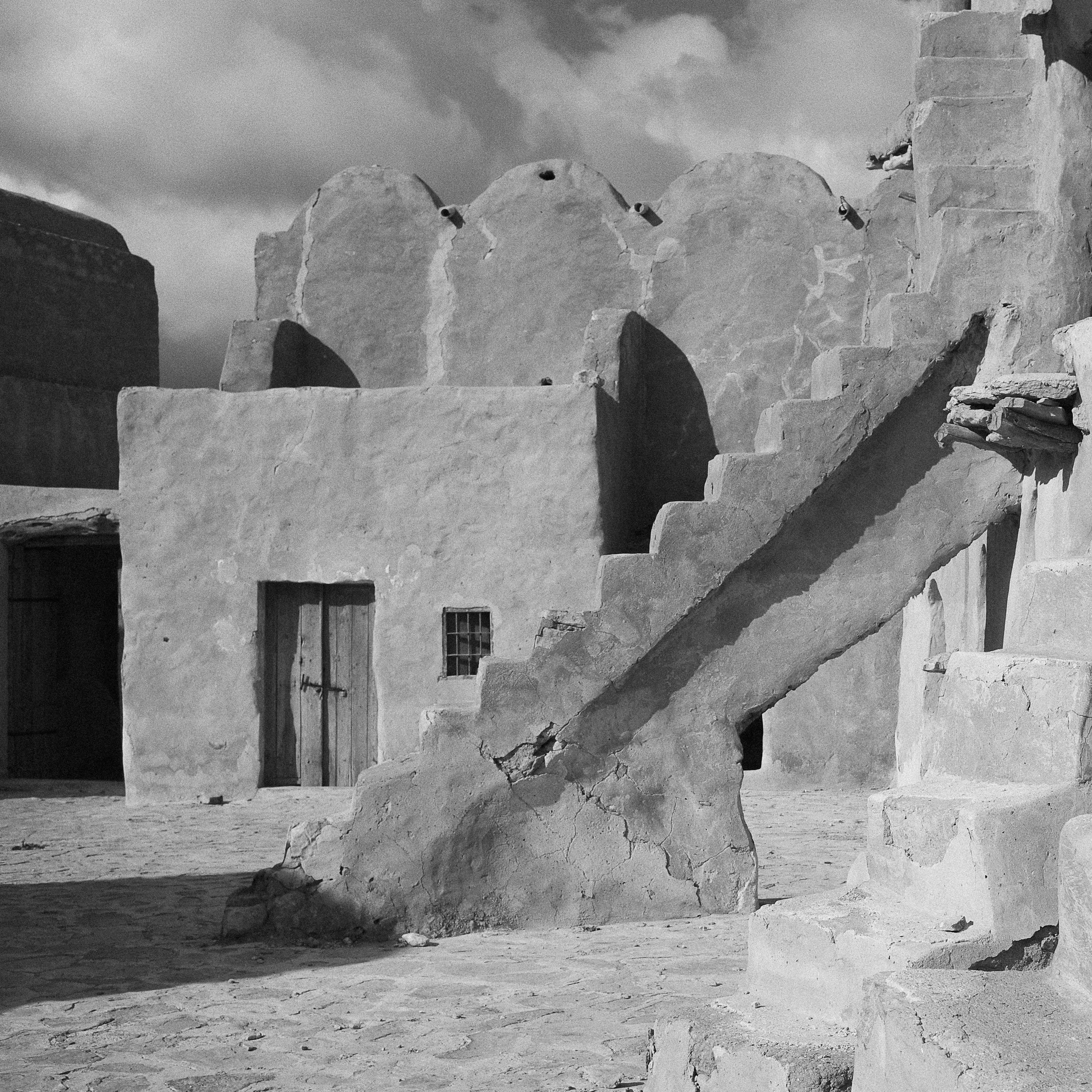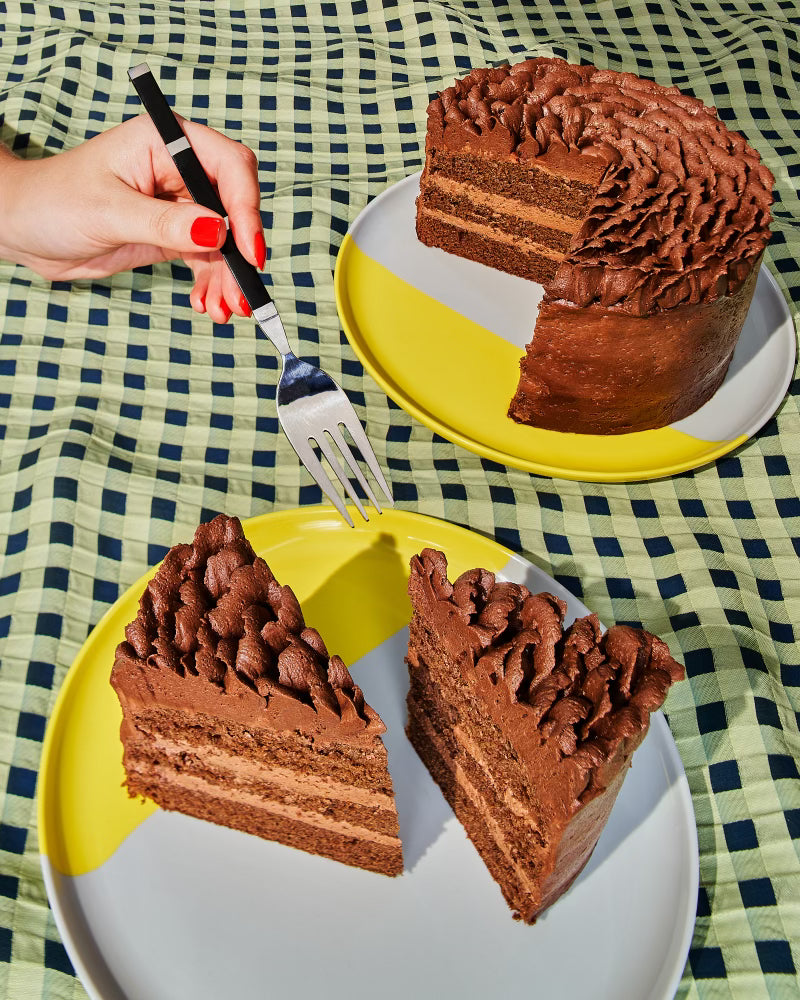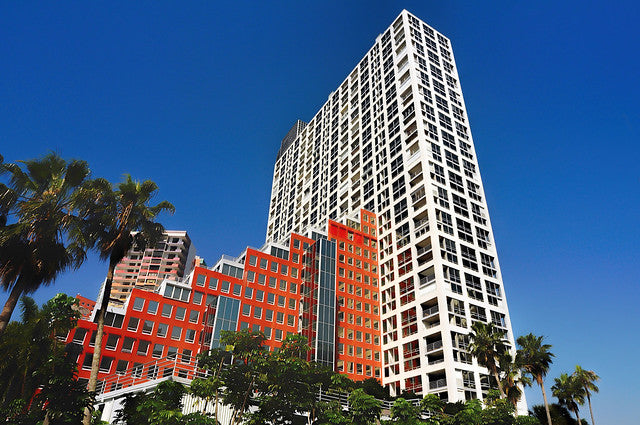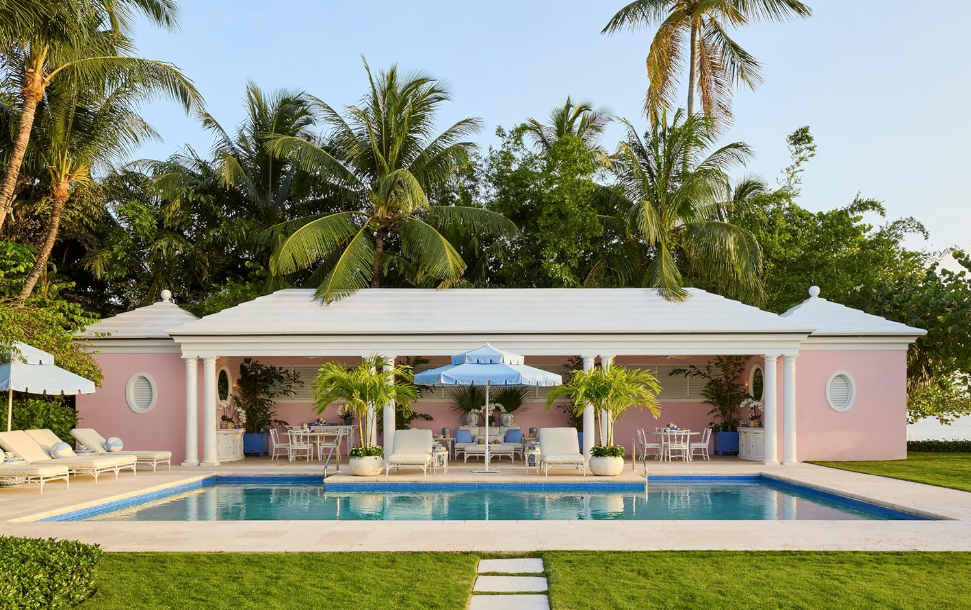
SOLSTYS DREAM WEAVERS JASMIN & CHRISTOPHE GO IN SEARCH OF THE LIGHT

Design Duo Jasmin & Christophe
As a barware, lighting and home accessories design company, at Thomas Fuchs Creative we specialize in handmade goods.
Every week, we take you behind the scenes to explore the people, places, and things that inspire us. This week we introduce you to a couple similar to us who have both a personal and working relationship together. While in Paris last week for the Paris Déco Off/ Maison Objet design week as always make it a point to catch up with old friends. Christophe Guillemot and Thomas worked in NYC at Donghia and have kept in touch as each of them has gone on to build and become forces to be reckoned with in each of their individual design spaces.
Christophe met Jasmin, his business and life partner, at a trade show, and they stayed in touch. One day, Jasmine sent Christophe a picture of a blue dot, sharing the inspiration it evoked. In an uncanny coincidence, Christophe responded with the exact same picture of the same blue dot at the top of a staircase hidden in a Hong Kong hike, asking, "Did you mean this blue dot?" And from there, as they say, the rest is history—or "her-story." As Thomas often says, who better to work with than your life partner, who always has your best interest at heart?

The Fab Four at Dinner in Paris
Jasmin and Christophe travel the world in search of light. They have been so inspired by the concept that they incorporated a quote by James Turrell into their company’s mission statement:
"I make spaces that apprehend light for our perception, and in some ways gather it, or seem to hold it... my work is more about your seeing than my seeing, although it's a product of my seeing." - James Turrell
Using rugs as canvases and photography as inspiration, through the camera's lens, Solstys captures the poetic artistry of nature—its authenticity and wildness. This dialogue of elements is translated into unique textural canvases, brought to life by the highly skilled hands of Tibetan weavers. Two distinct art forms merge to create a new medium, illustrating the wondrous magic and imperfect perfection found in nature. The couple genuinely disconnect from the daily grind to embark on a search for light. The photographs they take guide them to remote factories specializing in the ancient craft of weaving, where they sit with artisans to select colors that reflect the light they captured and experienced.
Each of the three collections—Kasbah, Kintsugi, and Écume—is uniquely distinct yet shares a common thread. Each carpet allows the observer to feel and sense the vibration of its journey—from the initial inspiration to the photograph, to the weaving process, and finally to the marketplace—transporting them to another world, much like stepping into a James Turrell exhibition.

An Inspiration Photo Taken by The Couple on Their Travels
Collection Kasbah
North African medieval cities, often called “medinas,” are centered around the "kasbah," or main fortress. Their complex city layouts stand in sharp contrast to the simple geometry of white, soft-angled houses silhouetted against the blue sky, playing subtly with light and shadows. A photograph from the couple’s travels evoked memories of Joseph Nicéphore Niépce (1765-1833), the French inventor who created the first permanent photograph using heliography—a pivotal development in modern photography.
A kasbah (/ˈkæzbɑː/, also US: /ˈkɑːz-/; Arabic: قصبة, romanized: qaṣaba, lit. 'fortress', Arabic pronunciation: [qasˤaba], Maghrebi Arabic: [qasˤba]), also spelled qasbah, qasba, qasaba, or casbah, is a fortress, most commonly the citadel or fortified quarter of a city.[1][2][3][4] It is also equivalent to the term alcazaba in Spanish (Spanish: [alkaˈθaβa]), which is derived from the same Arabic word.[5][6] By extension, the term can also refer to a medina quarter, particularly in Algeria. In various languages, the Arabic word, or local words borrowed from the Arabic word, can also refer to a settlement, a fort, a watchtower, or a blockhouse.
The sunlit dwellings, with their soft-angled silhouettes against the blue Mediterranean sky, conjured a scene reminiscent of a Paul Bowles novel—an intricate interplay of mystery, shadows, and light. Thus, the Kasbah collection was born.
Collection Kintsugi
The Japanese art of Kintsugi, the craft of mending broken ceramics while celebrating their imperfections, has long fascinated Jasmine and Christophe. Kintsugi epitomizes restoration, recycling, and artistic transformation. Intrigued, they began studying these newly formed patterns, deciphering untold stories within the fractures. Their Kintsugi collection gives life to these stories.
Kintsugi is the ancient Japanese art of putting broken pottery pieces back together with lacquer mixed with precious metals, like gold, silver, or platinum . If an object of pottery is broken, rather than discarding it, the pieces are painstakingly put together over months. Instead of trying to hide the damage, the cracks are highlighted in precious metal.
For the Japanese, kintsugi is part of a philosophy of embracing our human flaws and life’s fragility. It is about celebrating imperfections. It offers an approach to life. Kintsugi teaches us that in life we can turn adversity into something that is beautiful and resilient. Kintsugi shows us that in time, we can heal from our wounds, embrace our imperfections, and become stronger. Kintsugi reminds us that no matter our difficulties, we can find a way to reframe and find meaning in life. When things fall apart in our fragile lives, there is a path forward. There is a way to find peace with our imperfections and our lives.
Collection Écume
There is nothing quite like watching the Atlantic Ocean kiss the pink granite coast of Brittany, France. The colors are surreal; the sea foam (écume) dances with the sunlight, creating majestic, fleeting shapes over and over again. The Écume collection attempts to capture these ephemeral, abstract masterpieces found in nature.
The delicate dance of sea foam upon the shore has become the heartbeat of their latest carpet design collection. Each wave, as it kisses the sand, leaves behind fleeting, intricate patterns—soft, organic, and endlessly mesmerizing. The way the foam swirls and dissipates, creating a tapestry of movement and texture, inspired then to translate this ethereal beauty into woven form.
Through a palette of muted creams, silvery blues, and deep oceanic hues, the couple sought to capture the serenity and romance of the sea meeting the land. Just as the tide ebbs and flows, these designs evoke a sense of fluidity and tranquility, inviting a touch of nature’s poetry into every space they grace.
Solstys rugs encapsulate the exquisite delicacy of simple things, reflecting their intrinsic beauty on our floors. These rugs explore the elegance of rust gradually seeping into a landscape, the whisper of shadows cast upon a wall—no defined form, only a space for personal interpretation, embracing the world across cultures and time. They are fragments of perpetual motion, woven into timeless art.
With offices in New York and Paris working with renown interior designers across the world this design duo is ready for their close up!
Log on to their site and check them out!
Contact
Have a great weekend,
Michou







Leave a comment
This site is protected by hCaptcha and the hCaptcha Privacy Policy and Terms of Service apply.